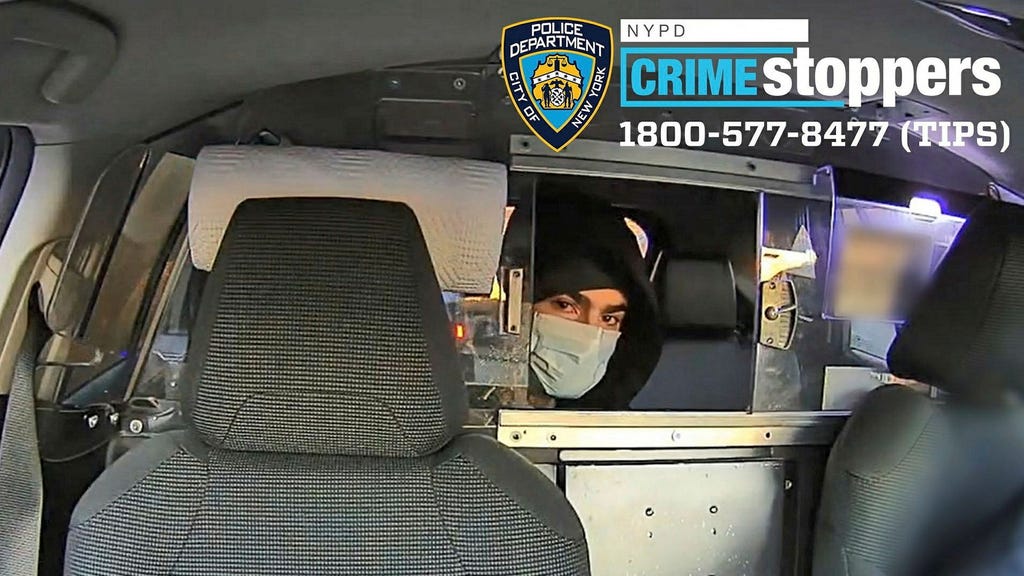The Assassination of Brian Thompson: A Deep Dive into the Ongoing Investigation
The bustling streets of Manhattan were rocked on a Wednesday morning by the shocking assassination of Brian Thompson, CEO of the insurance giant United Healthcare. Thompson was en route to a conference when he was gunned down outside the Hilton Midtown hotel on Sixth Avenue. The brazen attack has sparked a massive manhunt, with law enforcement agencies working tirelessly to apprehend the perpetrator. The New York Police Department has released surveillance images of a suspect, a man clad in a black hooded jacket and face mask, captured inside a taxi shortly before the murder. The images, though partially obscured by the mask, offer a crucial lead in the investigation.
The NYPD’s investigation has revealed several intriguing details. Three spent shell casings were discovered at the crime scene, each inscribed with a single word: "deny," "defend," and "defer." These words, commonly used by critics of the insurance industry to describe tactics employed to avoid paying out claims, suggest a possible motive for the assassination. This has led investigators to explore the possibility that the killing was an act of retaliation or a statement against United Healthcare and the broader insurance industry. The presence of these words raises questions about the killer’s potential connections to activist groups or individuals with grievances against insurance companies.
Further deepening the mystery, police recovered a discarded water bottle and a backpack in Central Park, believed to have been dropped by the fleeing suspect. These items are undergoing forensic analysis for DNA evidence, which could be instrumental in identifying the killer. The suspect’s escape route, initially on foot and then by bicycle towards Central Park, has been partially pieced together through surveillance footage and witness testimonies. The trail, however, goes cold at a bus terminal in northern Manhattan approximately an hour after the shooting. This abrupt disappearance suggests a level of premeditation and planning, indicating the suspect may have had a network of support or a prearranged escape route.
The investigation has extended beyond the immediate vicinity of the crime scene. Information obtained by CBS News indicates that the suspect arrived in New York City ten days prior to the assassination, traveling on a Greyhound bus. He used a counterfeit New Jersey driver’s license to check into a hostel on the Upper West Side, paying for his accommodation in cash. These details paint a picture of a meticulously planned operation, with the suspect taking precautions to conceal his identity and movements. The use of a fake ID and cash payments suggests a deliberate attempt to avoid leaving a digital trail.
The NYPD has compiled a series of approximately 200 photographs of the suspect and is working to reconstruct his activities in the days leading up to and following the murder. This extensive photographic record, combined with witness interviews and forensic analysis, is gradually building a more comprehensive profile of the suspect. Investigators are meticulously piecing together his movements, contacts, and potential motives, hoping to uncover the key that will unlock the mystery surrounding Thompson’s death. The $500,000 reward offered for information leading to an arrest underscores the urgency and importance of this investigation.
The assassination of Brian Thompson has sent shockwaves through the insurance industry and beyond. The audacity of the crime, coupled with the cryptic messages left at the scene, has fueled speculation and raised questions about the security of corporate executives. As the investigation continues, the NYPD remains committed to bringing the perpetrator to justice and providing answers to the many questions surrounding this tragic event. The case serves as a stark reminder of the vulnerabilities even high-profile individuals face and the lengths some will go to express their grievances, real or perceived. The meticulous planning and execution of the assassination highlight the challenges faced by law enforcement in combating such calculated acts of violence.














